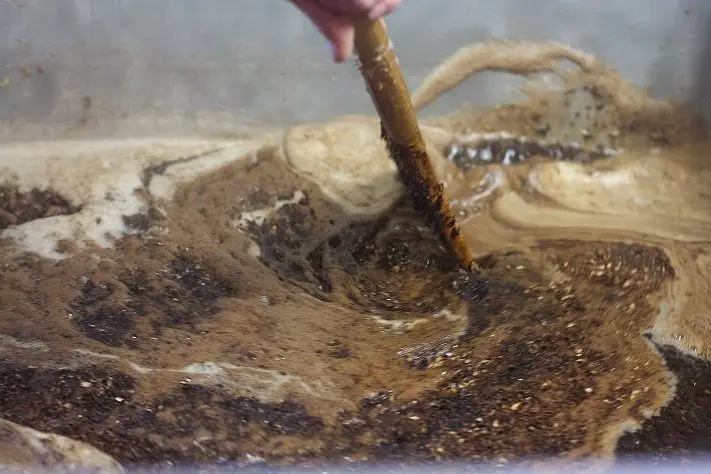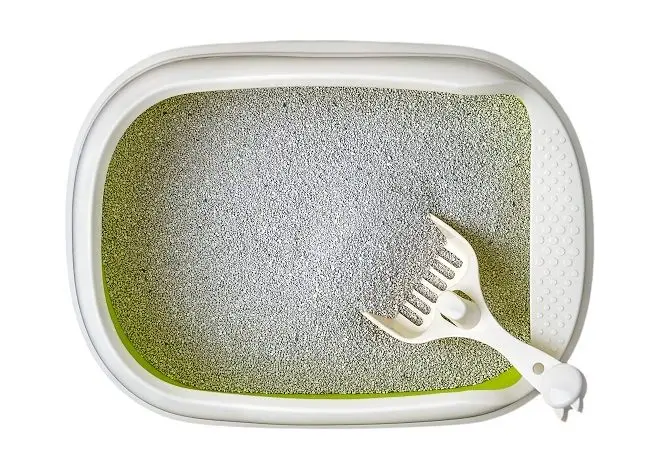Contents
Both beginners and experienced distillers can get bitter moonshine even after the second distillation, since the problem is not always associated with a violation of distillation technology. There are 5 basic causes of a bitter taste.
1. Burning solid particles of mash
The most common occurrence. If the mash is poorly filtered (strained), when heated, the remains of raw materials, yeast and sediment burn, and the combustion products, together with alcohol vapor, enter the moonshine.
Prevention: carefully filter and clarify the mash (preferably), removing particles of pulp, skins, dead yeast and sediment. Distill thick mash with a steam generator or in a water bath.

2. Wrong work with raw materials or mash
Too strong crushing of fruits and berries leads to damage to the bones, which contain a lot of tannins and tannins. As a result, these substances first fall into the mash, and then into the finished moonshine. Sometimes the skin and internal parts near the bones are also very bitter, so they need to be removed.
Another option is that rotten or spoiled raw materials got into the mash, even a relatively small amount is enough for the rot to spoil the taste. Also, bitterness in moonshine appears if the fermented mash is not removed from the sediment for a long time (filtered), because over time the sediment begins to decompose and rot.
Prevention: carefully monitor the quality of raw materials, chop fruits and squeeze juice so that the bones remain intact. Remove the fermented mash from the sediment in time.
3. Bad yeast and must contamination
Sometimes spoiled or low-quality yeast gives the mash a bitter aftertaste. You need to think about this problem if the technology for making moonshine has not changed, and bitterness appeared immediately after using new yeast.
In the absence of sterility and air access, the wort can become infected with pathogens that cause acetic souring, mold and lactic fermentation. Subsequently, this mash becomes bitter or sour.
If mold or other signs of infection appear, the mash should be drained from the sediment, brought to a boil, then cooled to room temperature, add a new batch of yeast and leave to ferment under a water lock to ferment.
Prevention: choose yeast responsibly, monitor sterility, use a water seal, limiting oxygen access.
4. Problems with moonshine
First of all, the bitter taste of moonshine makes itself felt if the apparatus has not been cleaned for a long time or there has been a splash – the ingress of foam or hot mash into the coil due to too intense heating. As a result, the remains of the mash from previous distillations in the cube or on the tubes burn.
Bitterness in a new moonshine may indicate the wrong choice of material or sealant (especially silicone), which are destroyed under the influence of high temperature or alcohol vapor.
Prevention: use moonshine stills made of safe materials, regularly clean the distillation cube, connecting tubes and coil. Follow the distillation technology without overheating the mash.
5. Long contact with wood
This refers to aging in barrels or insisting on oak bark or chips (wood), as a result of which the distillate is oversaturated with tannins.
Prevention: periodically check the taste during aging (in the case of bark and chips at least once every 5-7 days) in order to pour the drink into bottles for storage in time.
Only mild bitterness can be eliminated and medium bitterness masked. For complete deliverance, I advise you to rectify moonshine into pure alcohol. If the problem is caused by low-quality materials of the apparatus, the drink cannot be corrected and can only be used for technical needs, since it is hazardous to health due to harmful substances. Moonshine stored in plastic bottles is also not subject to cleaning.
Step-by-step instructions on how to remove bitterness from moonshine
1. After fermentation, filter the mash and taste it. If strong bitterness is felt (slight bitterness is normal), clean the mash with egg white or bentonite (preferably) even before distillation.
To clean with egg white: beat the eggs, carefully separate the protein from the yolk, beat the whites with a whisk until foamy, add at the rate of 50 ml per 1 liter of mash. Stir, close tightly and leave for 7 days in the cold. Then drain from the sediment and overtake.
To clean with bentonite: you need 3 grams of white clay per 1 liter of mash, pour bentonite with ten times the amount of water, mix and leave for 8-10 hours so that the clay turns into lime, then add water so that the mixture becomes like sour cream in consistency. Pour the diluted bentonite into the mash in a thin stream, mix, leave for 24 hours in a hermetically sealed container at room temperature. Filter the mash from the sediment and overtake.

2. If bitterness in moonshine appeared after distillation, then sugar or grain distillate should be diluted with water to a strength of 15%, cleaned with wood or coconut activated charcoal (pharmaceutical tablets will not help), then do fractional distillation, selecting 12-15% of the “heads” on the amount of pure alcohol.
Fruit moonshine loses its aroma after cleaning with charcoal, therefore, to eliminate bitterness, you can use egg white or bentonite in the same proportions as for mash. Pre-dilute the distillate with water to a strength of 12-14%. Repeated distillation with a cut-off of 14-15% of “heads” for pure alcohol is required.
3. After distillation, leave the moonshine for 10-15 days in a cool place. Even if a slight bitterness remains, there is a chance that it will disappear after a while.
4. You can mask the bitter taste of the drink by insisting on horseradish, pepper, galangal, ginger and cranberries.









